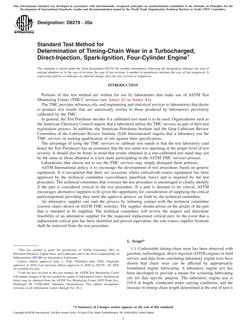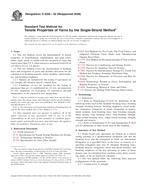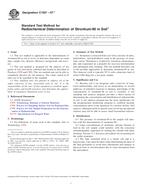1.1 This practice covers procedures for calculating treatment adjustment factors to be applied to design values for fire-retardant-treated lumber used at ambient temperatures [service temperatures up to 100 – F (38 – C)] and as framing in roof systems.
1.2 These design value treatment adjustment factors for the properties of extreme fiber in bending, tension parallel to grain, compression parallel to grain, horizontal shear and modulus of elasticity are based on the results of strength tests of matched treated and untreated small clear wood specimens after conditioning at nominal room temperatures [72°F (22°C)] and of other similar specimens after exposure at 150°F (66°C). The test data are developed in accordance with Test Method D 5664. Guidelines are provided for establishing adjustment factors for the property of compression perpendicular to grain and for connection design values.
1.3 Treatment adjustment factors for roof framing applications are based on computer generated thermal load profiles for normal wood roof construction used in a variety of climates as defined by weather tapes of the American Society of Heating, Refrigerating and Air-Conditioning Engineers, Inc. (ASHRAE). The solar loads, moisture conditions, ventilation rates and other parameters used in the computer model were selected to represent typical sloped roof designs. The thermal loads in this practice are applicable to roof slopes of 3 in 12 or steeper, to roofs designed with vent areas and vent locations conforming to national standards of practice and to designs in which the bottom side of the roof sheathing is exposed to ventilation air. For designs that do not have one or more of these base-line features, the applicability of this practice needs to be documented by the user.
1.4 The procedures of this practice parallel those given in Practice D 6305. General references and commentary in Practice D 6305 are also applicable to this practice.
1.5 This practice is written in inch-pound units with SI units provided in parentheses for information only.
1.6 This standard does not purport to address all of the safety concerns, if any, associated with its use. It is the responsibility of the user of this standard to establish appropriate safety and health practices and determine the applicability of regulatory limitations prior to use.
Product Details
- Published:
- 11/10/2003
- Number of Pages:
- 6
- File Size:
- 1 file , 140 KB
- Redline File Size:
- 2 files , 300 KB


